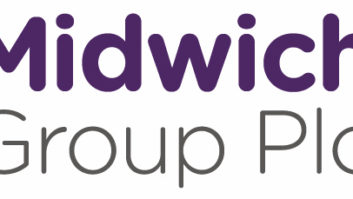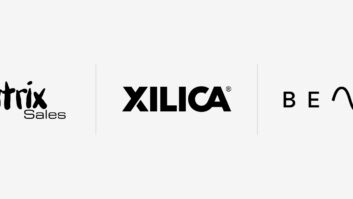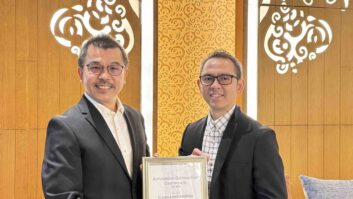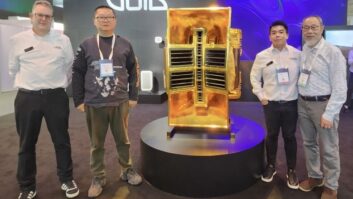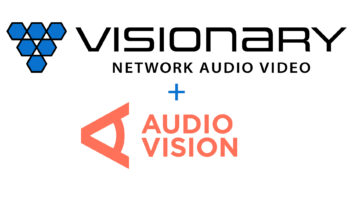New kid on the block Technological Innovations Group (TIG) – formerly Crestron International – named exclusive sales partner for Crestron EMEA, but new doors open
Amongst the fanfare of ISE last week, of which there were hundreds (possibly thousands) of press announcements, there was one significant story – one which impacts thousands of AV professionals across Europe – which went largely under the radar.

The story in question was buried inside the news that Oblong industries – a high-end provider of interactive collaborative meeting applications (its tech was used in the film Minority Report), had signed a ‘historic” strategic sales partnership with a firm called, ‘TIG’ to drive up sales in the EMEA.
That all sounds great, but who or what is TIG? And whilst the story around Oblong itself has been well documented (read it here), the explanation of this mystery TIG has largely gone unquestioned or unanswered.
So, let’s explain. As a starting point, TIG is an abbreviation of ‘Technological Innovation Group’ – a brand new company, which officially went live on January 7, 2019.
The company is headed up by industry stalwart CEO Robin van Meeuwen, who prior to that day had headed up Crestron International (the official distributor of Crestron in the EMEA) since 2004.
So, does the news mean Robin’s relationship with Crestron – a brand he and his family (Robin took over Crestron International from his father Frank) have lived and breathed since 1994 – come to an abrupt end? Not at all.
“It’s absolutely business as usual”, explained Robin as we sat on a balcony overlooking Crestron’s giant packed stand during ISE. “2018 was a fantastic year for us and we’re all really excited about the possibilities for the future.”
https://www.youtube.com/watch?v=uTM0q1ae9WU
This was not your typical PR spiel, with the excitement in Robin’s eyes evident with every word spoken throughout our discussion.
And whilst Crestron is absolutely at the heart of TIG’s future, the possibilities of which Robin speaks of, now stretch far beyond.
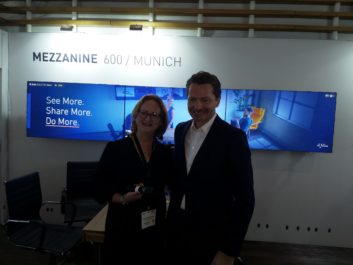
But before we explain why, let’s take a quick trip down memory lane.
Back in 1987, Frank van Meeuwen (FvM), Robin’s father, created a company called Future Vision Marketing (FVM – get it?).
FVM was set up as a sales agency for “around a dozen” US-based AV brands, of which Frank would promote to various distributors across Europe.
In 1994, FVM clinched a deal to go exclusively with Crestron, at which time FVM became the parent company name and Crestron International becoming the trading name for Crestron’s business in the EMEA.
Essentially – and this surprised many – FVM was, in fact, acting as an indirect distributor for Crestron (trading as Crestron International), which saw it buy stock directly from Crestron, housing it, then selling and delivering it to customers in the UK and across Europe.
The success of this partnership has resulted in FVM (again, trading as Crestron International) significantly expand its business, boosting business opportunities and enhancing the Crestron brand, with 15 offices in 11 countries.
‘In 1998 we first opened the UK organisation,” explained Robin. “Then in 1999, we bought a distributor in Germany. In 2000 we set up our own organisation in France, then in 2001 in Spain, 2003 in Italy, 2012 Netherlands, 2015 South Africa, 2016 in Norway.”
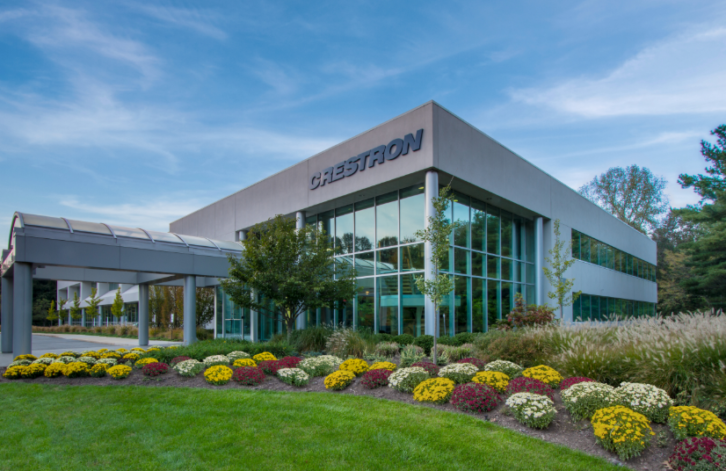
However, Crestron has been undergoing some significant changes around the structure of its business and – crucially here – its routes to market.
Whilst the indirect model used by Crestron International – a model that was widely adopted across the planet – has proven a huge success, the manufacturer has in recent years been taking back its control of stock and how it reaches customers.
What does that mean? Instead of using third-party regional distribution partners, Crestron has taken up the role of both manufacturer and distributor. This means all the warehousing, logistics, repairs, customer service and even product marketing, now all fall under its control.
The removal of partners has been ongoing for a number of years, and in April 2018, it was confirmed that the model would be used in Europe.
“Crestron wants to globalise the way they work,” said Robin. “It all makes sense. The manufacturer is the distributor.”
For Robin, the switch in play was a significant one, from an initially concerning one to one that has now opened up some significant opportunities and benefits.
Crestron, as Robin explains, heavily values its relationship and the hard work and investment placed by Future Vision Marketing in driving sales and awareness of the Crestron brand in Europe. For the past 30 years, Future Vision Marketing has expanded with 15 offices in 11 countries with a team of 300 people.
The relationship was too important to lose, so whilst Crestron Europe is now directly responsible for supply, support, and training for Crestron products, TIG has been appointed as its exclusive sales agent and is now able to focus our efforts entirely on our customers’ sales needs.
“This combined effort is coordinated by Future Vision and Crestron is to provide our customers with the best possible customer experience,” explained Robin.
“We basically came up with the model where we become the exclusive sales agency for Crestron in EMEA. Crestron handles the warehousing, the logistics and customer support reflecting exactly like they are doing around the world. They’ve been doing it for years and the only last part of the world where it was managed through a distributor, was us.”
We drive the sales to the dealer and the end user and that’s how that relationship works.”
The benefits and relief from a cash flow perspective in not managing the distribution side are also significant.
“It’s a staggering business to cash flow,” Robin explained. “Crestron is our supplier, so they ship to us, we put the stock in a warehouse and we carry the inventory here and we sell to the dealer and the dealer sells to end user. This process takes around six months, so the minute we ship a box, it can take six months for us to get paid by the dealer. So, we carry a lot of risk and a lot of debt owed by our dealers. It’s a huge financial challenge to undertake and the numbers we are doing now are phenomenal, so this will be something of a relief for us as a business.”
The benefits of being able to focus on sales have, as you would expect, impacted its team. From 270, TIG now has just over 120. However, as part of the deal, all existing staff have no been transferred to Crestron, resulting in no redundancies.
“150 of those took care of logistics, the finance, administration, customer support, repairs, HR – that’s all gone to Crestron. Crestron has absorbed all of those people as part of the changes, so no one has lost their jobs, which is great.”
Back to the future
So, the key thing to remember here is, that TIG is the holding company. FVM will continue to carry the Crestron representation, backing up Robin’s “business as usual” statement.
The biggest change of all, see the creation of a new arm of the business, Technological Innovations, which removes the previous one brand strategy and will offer new “premium” AV brands across Europe.
As part of the agreement with Crestron, all additional brands being sold are part of a ‘cross pollination’ strategy, with brands not competing with Crestron, but complimenting it. Oblong is the first to be signed, a move it hopes will help “catapult” its brand and sales opportunities across the EMEA.
“As a sales agency, Future Vision Marketing will become part of the Technological Innovations Group (TIG), which will be representing various additional product lines complementing Crestron’s solutions. We’ve announced that it will extend its services to one of the most influential collaboration technologies at ISE: Mezzanine from Oblong Industries. I think it’s a product that has huge potential, but their reach is limited”
Discussions with more brands have begun, although Robin is keeping things under his hat for now.
“It has to be premium and it has to be complimentary,” he said. “We are focused on the EMEA, but who knows. We may be able to roll this out globally. It’s scalable.”
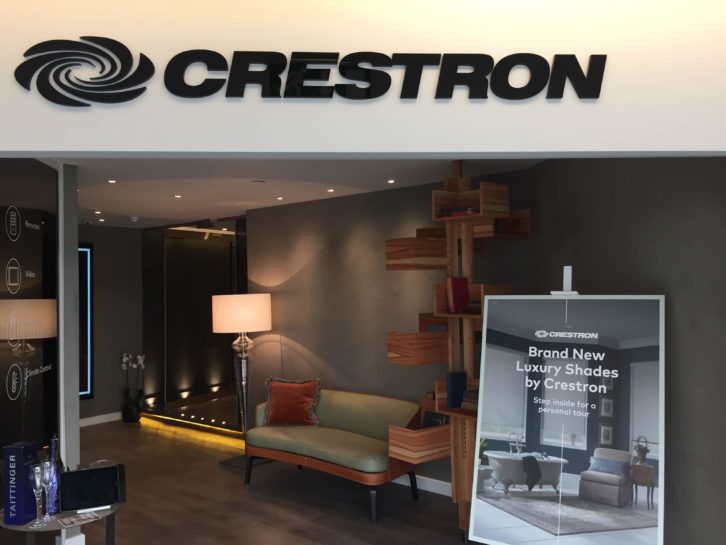
Cross-pollination
As for TIG’s current customers, Robin insists they will continue to be looked after by the same professional sales teams they are used to and will be investing in adding more people to enforce our sales and business development efforts for all our vendor partners.
TIG is also planning on opening new multi-branded experience centres to showcase all of its brands.
These will include two flagship stores, one in London and one in Frankfurt and smaller ones in Moscow, South Africa, Oslo, Dubai and Paris. Existing locations such as Madrid and Milan will remain.
“We have 2,500 customers and we’ve created a separate team of people to focus on those brands,” said Robin.
“From a Crestron point of view, it all stays exactly the same. He (pointing to one of his colleagues in white Crestron branded shirt) works for me but has a business card that is Crestron. Our dedicated sales team remains for the Crestron effort. He knows about Oblong, but he won’t have a TIG card, because his success is through representing the manufacturer, but he works for TIG. He will know about Oblong and sees an opportunity, he will call a colleague representing Oblong to continue the discussion. That’s cross-pollination and there will be a huge amount of cross-pollination between Crestron and these brands because they compliment each other. They may uncover a project opportunity and there will be a lot of dynamic interaction between the two groups.
“That’s how it’s working. We have just started and we have around seven dedicated people ready on the TI side. Our sales team of approximately 100 people still exists at FVM. They are incentivised on both sides to sell, so if they uncover an opportunity on either side, they will benefit, so everybody wins.
In conclusion, Robin added: “All I need to do is invest and focus in my sales abilities. it’s a win-win for everybody. We’re not a distributor anymore, so we can focus on sales. We want to be focused on the sales and nothing but the sales.”
